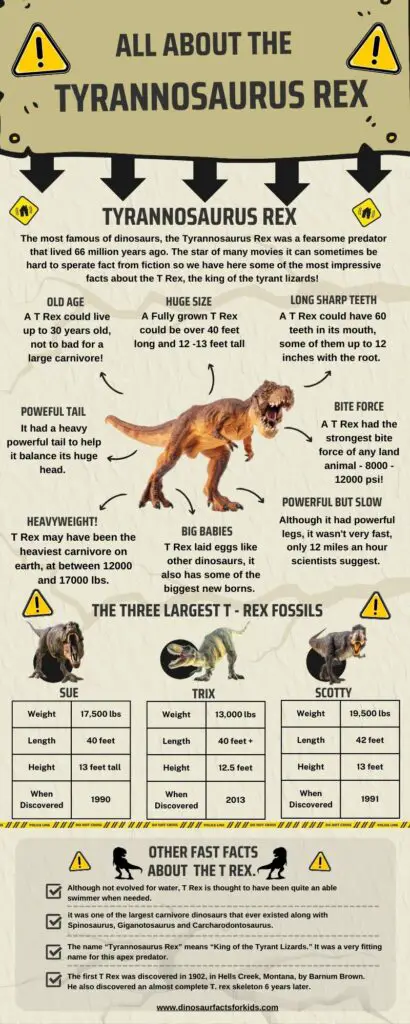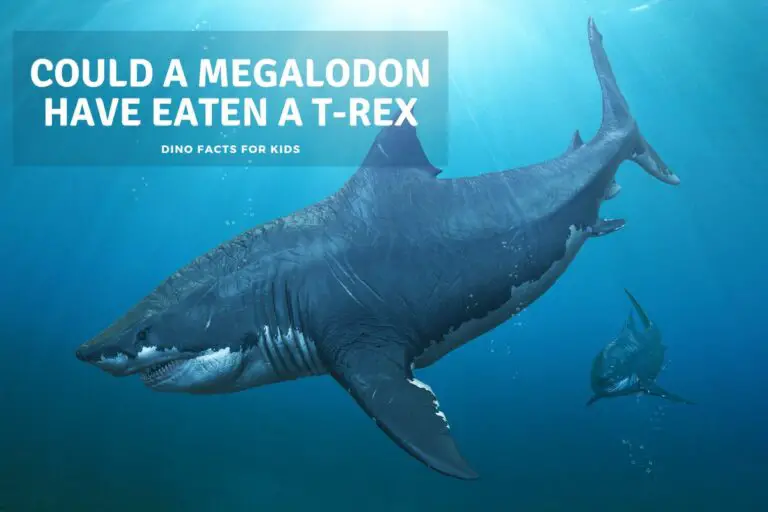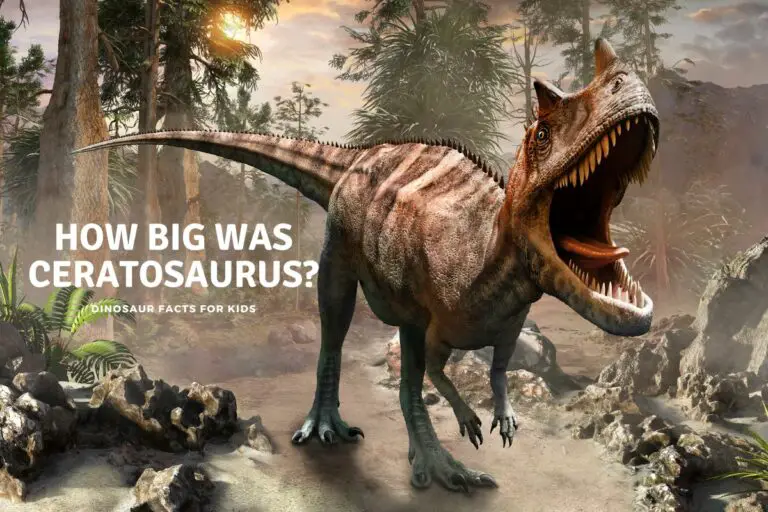Did T-Rex Have Wings?
Of all the images of T Rex that have been created in the 120 years or so since the first fossilized remains were discovered by Barnum Brown in Hells Creek, Montana in 1902, one constant feature and one omission has been the fact that for its size T Rex has almost comically short arms, and despite evidence of dinosaurs having feathers it was never shown to have wings, even of a vestigial nature.
There is no evidence to suggest that T-Rex’s forelimbs were wings. Many T-Rex ancestors had forelimbs proportionally longer and with functionality more akin to arms than vestigial wings. Although later maniraptorans and dromaeosaurs retained their quill knobs and wings there is no evidence theropods like T-Rex did so.
This article explores the Question Did T Rex have wings and what did the T-Rex use its arms / wings for.
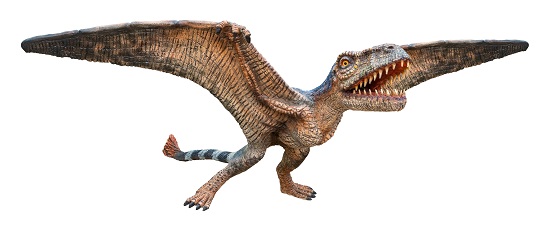
Did T Rex Have Wings?
The short answer, for now at least, is no, probably not. There is, however, some speculation on whether or not T-rex had feathers, and whether its “arms” were in fact wings that were similar in construction to those of a modern ostrich.
The common depiction of T-rex shows a large, monstrous predator with huge sharp teeth, surprisingly fast moving speeds, but also tiny and pretty useless little arms. How many jokes have been made about the T-rex’s short arms and the many frustrations they must have faced as a result of having them.
While we tend to think of dinosaurs as being giant lizards, and sharing features with common lizards and reptiles we still see around today, the truth has been discovered to be a bit more complicated than that. Anatomically speaking, many dinosaurs shared more features with birds than they did with other reptiles, especially the theropod branch.
The shape and construction of the arms led some to believe that the T-rex’s arms were vestigial, an evolutionary hangover not unlike the wings of species of flightless birds. It would explain why they were apparently so small and useless compared to the relative size of the rest of the dinosaur.
On the other hand, contrary opinion suggests that actually these were arms, and they were far from useless. Theories suggest that even these small arms, equipped with large claws, could have been exceptionally effective in close-quarter fighting with other dinosaurs, good in particular for slashing. They also could have been used to help dinosaurs get up from the ground after resting or falling, and even to grip onto a mate more securely during sex.
Although there were other theropods that retained their wing like forelimbs, which has been evidenced by fossilized feathers and indentations where feathers would be, this has not been discovered on fossils of T-Rex, or its close ancestors.
There is evidence for feathered members of the tyrannosaur family, including large members like yutyrannus, which may have had longer feathers on its forelimbs. However there is no direct evidence that T-Rex had feathers, never mind wing like forelimbs.
There are suggestions that T-Rex may have some covering of feathers, mainly due to the proliferation of feathered therapod’s being discovered, but as size increases ther eis less need for coverings in general and until impressions are found it has to remain an educated assumption.
With so many contrasting views, it’s hard to say for sure whether T-rex had wings, but currently the evidence doesn’t suggest that they did.
Did Ancestors of T-rex Have Wings?
Although for a lot of years there were few fossils of Tyrannosaur’s family members discovered this has changed in recent years with more and more, smaller and earlier, Tyrannosaurs being discovered.
So it is possible to look at this dinosaurs and see if there was ever wings in the T-Rex family trees. The table below looks at 4, which while far from definitive research, does cover the earliest known (currently) Tyrannosaur – proceratosaurus and some of the more recent tyrannosaur family members Daspletosaurus
Possible dinosaurs to look for include the following we will offer some ideas after.
Table 1: Table of Tyrannosaur Ancestors
| Tyrannosaur Ancestor | When Lived | Length | Feathered | Arms or Wings |
| Daspletosaurus | 74 million years ago | up to 30 feet ( 9 metres) | Possibly crested, or remenented of feathers | Though to have arms, the longest proportionally of any tyrannosaur family member. |
| Morus Intrepidus | 96 million years ago | 4 metres (12 feet) in length | Most likely, although not able to be sure from fossils found so far. | thought to have arms longer proportionally than T Rex. ( not evidences though) |
| Lythronax | 80 million years ago. | 5-8 meters, (16 to 26 feet) | Possibly, though smaller members had feathers it may have been a little large to be covered. | Thought to have similar proportion arms to T-Rex |
| Proceratosaurus | 166 Million years ago | 3 metres (9.8 Feet) | Yes, likely to have been covered with feathers | Thought to have arms, longer proportionally than T-Rex |
The table above covers 100 million years of tyrannosaur family history ( to be clear VERY BRIEFLY) and in the four dinosaurs mentioned none of them are thought to have vestigial wings, but to have functioning fore limbs.
It can be said that for the most part the size of them fore arms or fore limbs has reduced proportionally as the tyrannosaur family developed over this million or so years but not to the extent of other theropods. In the same time Carnotaurus for example had its forelimbs reduce dramatically.
So it appears that rather than unused wings T- rex has functional arms, although their function and abilities are still hotly disputed. It remains that current science thinks that the T-Rex forelimbs were actually arms with significant strength ( see below) and that they were actually used by T-Rex for multiple purposes. We take a look at some of those purposes later in the page.
So currently commonly agreed with theories point to T-Rex not possessing wings, merely possessing reduced size, but still functional and surprisingly strong forelimbs.
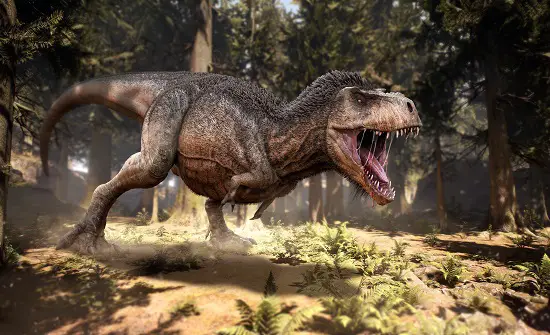
What dinosaurs did have wings.
Just to be clear reptiles like pterosaurs, Quetzalcoatlus were not dinosaurs, an they did certainly have wings and the ability to use them for flight. If dinosaurs evolved later ( much later) into birds it can be expected to see wings in the fossil record, and we can.
However dinosauria is the umbrella term for dinosaurs, there were many many different families, species, and sub groups within it. there were not any winged sauropods, ceratopsians, or ankylosaurs for example.
However there were winged theropods and this is why the questions of not just if T Rex had wings but if there were other large theropods that may have had wings as well.
We say large as there is an increasing about of evidence that smaller theropods not only had feathers, on their bodies they may have and them on their forelimbs, with some as flight tools, and with others as display or as vestigial and in some cases functioning wings.
There are many feathered dinosaurs over 60 discovered at the date of writing, however to save that list! we have just put the more well known dinosaurs with wings below. We have articles on feathered and flying dinosaurs on the site if you want to know more.
- Sinosauropteryx
- Archeopteryx
- Microraptor
- Velociraptor
- Dakotaraptor
- Utahraptor
All of these dinosaurs have been found with quill knobs or evidence of feathers and wings and all were theropods. However they were not tyrannosaurids, they were maniraptorans or dromaeosaurs. While similar they were much more closely related to birds.
Also, and most importantly, their ancestors – the dinosaurs that they evolved from – also show evidence of wings, quill knobs and flight ( even if not capable of flight) feathers. The ancestors of T-Rex do not currently show this.
Dilong and Yutyrannus
Both of these early members of the Tyrannosaur family were found to have a long and hair-like coating, as well as having scales identified on parts of the body such as the underside of the tail and on the feet. What mostly gives rise to the belief that these dinosaurs were “fuzzy” or feathered was the appearance of their skin.
Skin impressions found on both of these Tyrannosaur variants were described as either “naked” or “plucked.” It was compared to a plucked chicken’s skin, thus revealing that previously there had been feathers and/or hair present at some point beforehand.
Dilong and Yutyrannus both show that it’s quite possible that feathers were no strange part of the Tyrannosaur anatomy. How much of a role they played, or how much of a feature they were on a T-rex, however, still remains a mystery. Further fossil discoveries are required to try and piece together more information.
So while there were plenty of dinosaurs that had feathers, and plenty of those that still had wings and feathers on those wings, T-Rex and Tyrannosaurus developed limbs.
Feathers or No Feathers? Wings or No Wings?
Much of the research and theory making that goes into dinosaurs and their feathers is based on more recent fossil finds in regions such as Liaoning Province of mainland China. Examples from other locations were never well-preserved enough for delicate features such as feathers to be preserved well enough. The most game-changing examples with feathers still preserved have mostly been found just in the last 15 years.
Perhaps the best example of a known feathered species is the Sinornithosaurus, which is one that was found originally in Liaoning. It showed not only the presence of feathers, but in fact different types of feathers on different parts of its body. Most interesting were the long and bird-like feathers that it had on its arms and tail.
This gives the Sinornithosaurus the appearance of being a winged dinosaur, but this was not a flying creature. Of course, the dinosaur that started the entire bird-dinosaur connection was Deinonychus, a key member of the raptor family.
Deinonychus, Velociraptors, and the Microraptor
It was the bird-like features of Deinonychus that helped scientists build the theory that many modern-day birds are the descendants of dinosaurs. Other raptors like the velociraptor were also shown to be covered in feathers, and were even sized more like birds we know, with each one being about the size as a turkey.
Discoveries of these dinosaurs’ remains have helped us piece together a better understanding of dinosaurs and their bird-like qualities, but one that also can’t be ignored in this family is the Microraptor, sometimes also called the “Four-Winged” dinosaur.
Microraptor was an amazing discovery (also in China) because it had wings on both its front and rear limbs. All other known feathered species to that point only had feathers on their front limbs.
Another interesting fact about the Microraptor is that its wings probably weren’t entirely useless. It is believed that Microraptor was at the very least a good glider, able to move from tree to tree. In addition, the apparent weakness in its hind limbs indicate that Microraptor might actually have been an active flying dinosaur.

How Long Were T-Rex Arms
The average length of a Fully Grown adult t Rex arms were around 3 feet or 1 metre long. they were very small compared to its size but not quite as small as the vestigial arms of other carnivores like the carnotaurus for example.
The arms actually had two curved talons about 5 to 6 inches long along the curve that may have been used for close in slashing of prey, or for courtship or mating rituals. Though we explore the reasons for this below.
What did T Rex use its arms for
T-Rex Used its Arms for Mating
One of the more popular theories about T rex arms is that they were used in mating, One theory holds that the short forelimbs were used for grasping during copulation, and could have been a crucial part of pre-copulation courting rituals.( see below)
However as we discuss below the arms of a T Rex appear to have been much stronger than their appearance would suggest, and overpowered for this task.
T-Rex Used Its arms for Display
One of the reasons that could suggest that T Rex forelimbs were more Wing like than arm like, or at the least shared traits for both, would be if they were used for display to attract mates.
While no Tyrannosaurus Fossils have been discovered with evidence of feathers, there have been fossils of its ancestors that have had fossilized evidence of feathers discovered. Dilong, discovered in 2004, for example was likely covered with them. It did live around 60 million years before T Rex however. Moros, although not discovered with feathers, also is presumed to have them.
these were smaller dinosaurs and the theory goes that the smaller the dinosaur the more likely the higher amount of feathers ( its a rule of thumb not a statement of fact however) When dinosaurs the size of T Rex evolved there was no need for large amounts of feathers to maintain heat, so what was left if any would have been either vestigial ( unneeded) or used for display and attraction. this may have included longer feathers on the arms though evidence is not available for this.
As has been suggested on other biped / theropod dinosaurs this may include left overs of wing feathers, even of the arms were less like wings, and more like, well, arms.
To get up off the floor
Despite the size of a T Rex arms being small they were actually surprisingly strong. At around 3 feet long they were longer than the average persons but unlike the average persons they were packed with muscles.
it was estimated that these small arms could pick up more than 430 pounds. ( about 3-4 people) each. With this strength they were clearly still useful. One of these suggested uses was to enable the T Rex to stand after resting or sleeping.
Strength like that would certainly give them a boost when trying to stand, and the claws at the end may have had other uses as well which we discuss in the the following sections.
Using their Arms for Grip and Weapons
Paelongtologust Steven Stanley theorized that these arms, often the subject of jokes and memes, were actually quite effective weapons. These arms with their strong muscles also had a pair of twin 4-5 inch claws at the end which while not a T-Rex’s primary means to kill would have still caused considerable damage if used to cut and slash prey or competitors.
Steven went on to say ‘Its short, strong forelimbs and large claws would have permitted T. rex, whether mounted on a victim’s back or grasping it with its jaws, to inflict four gashes a meter [three feet] or more long and several centimeters [more than an inch] deep within a few seconds’
Steven Stanley
However this theory is not universally accepted and with the size of arms reducing through out the millions of years of T Rex ancestors, and the size of jaws, mouth and bite force increasing it does look like t Rex was putting its stock in a huge bite rather than a combination of teeth and claws.
Keep them out of the way
A relatively new theory on why T – Rex had short front limbs was put forward in 2022. The Paleontologist Kevin Padian has suggested that over generations these forelimbs reduced in size to prevent them being bitten off during feeding.
HE suggested that when feeding, if there was more than one T Rex then a quick snap from your neighbour could amputate fairly easily a T Rex arm and the dangers of infection from such a wound would be serious. Having shorter arms reduced this risk.
Most ancestors of T Rex certainly had longer arms in comparison to their body size, and there as certainly a reasons that shorter arms evolved to become a dominant feature of a T Rex.
This is not supported ( yet) by evidence and although there has been bite marks discovered on other areas of a T Rex – its skull, body etc there has not been a large scale examination on forelimb bones to see if there are less bite marks. If there are, Padian suggests, it may give some traction to his theory.
Until that point it remains a theory.
To make way for head and neck muscles
There is only so much real estate inside a T-Rex Body, and the area that holds the muscles for both the neck, head and arms is in very close proximity to each other.
Some theories suggest that as they T-Rex evolved to have such a huge mouth and head it also needed to evolve the muscles to provide both support and that huge bite force. These muscles would need to be anchored in the neck and chest.
So the theory states that as the head grew the arms reduced, giving the room they occupied over to muscles to control and support that super sized head.
.
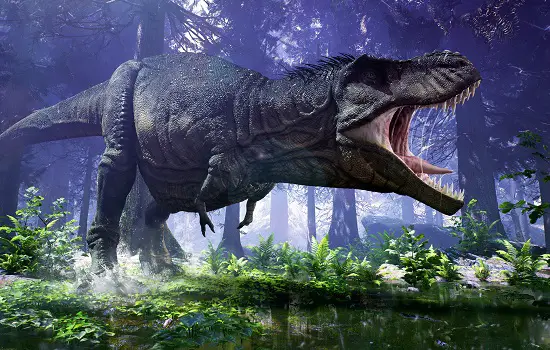
We have a huge selection or articles to answer the common and some less common questions about the Tyrannosaurus Rex here on the site and to make it easier to access we have them in the table below.
Conclusion
However all of the theories surround the arms of a T Rex remain just that – theories. As is to be expected evidence on the use and the construction of a T Rex arms are rare enough. And although it appears that they remained arms rather than reduced size wings like in ostriches today, these theories can be changed by the next uncovered fossil.
So at the moment the T – Rex is thought to have arms, short ones definitely, strong ones probably, but arms nonetheless. and there is little evidence to suggest that these were wings. Arms are in its family free all the way back to Moros intrepidus and even further back, so
- while the T -Rex got bigger, its arms, got smaller to a point
- Its family may have had feathers but ther eis no overwhelming evidence for wings
- and while it may have had feathers, it is unlikely to have had wings
All we can do now is wait for the next fossil to be uncovered
Did Tyrannosaurus Rex Have Wings?
T
References
- https://scitechdaily.com/paleontologists-new-theory-for-why-t-rex-had-such-ridiculously-short-arms/
- https://www.nationalgeographic.com/science/article/tyrannosaurus-rex-arms-weapons-paleontology-science#:~:text=Whatever%20their%20limited%20use%2C%20the,the%20wings%20of%20flightless%20birds.
- https://www.discovermagazine.com/planet-earth/why-did-t-rex-have-such-tiny-arms-to-keep-them-out-of-the-way
- https://www.history.com/news/there-was-a-dangerous-purpose-behind-t-rexs-tiny-arms
- https://www.zmescience.com/science/theres-a-new-hypothesis-for-t-rexs-small-arms/
- https://www.nytimes.com/2019/03/07/arts/design/t-rex-exhibition-american-museum-of-natural-history.html#:~:text=Scientists%20now%20believe%20that%20all,had%20just%20patches%20for%20display.
- https://magazine.scienceconnected.org/2017/03/dinosaur-gave-rise-tyrannosaurus-rex
- https://archosaurmusings.wordpress.com/2012/04/04/the-giant-feathered-tyrannosaur-yutyrannus-huali//
Hi, I am Roy Ford a General Studies and English Teacher who has taught all over the world. What started as a fossil collection became a great way to teach, motivate and inspire students of all ages and all over the world about dinosaurs and from that and children’s love of dinosaurs came the site dinosaur facts for kids, a resource for all ages.

